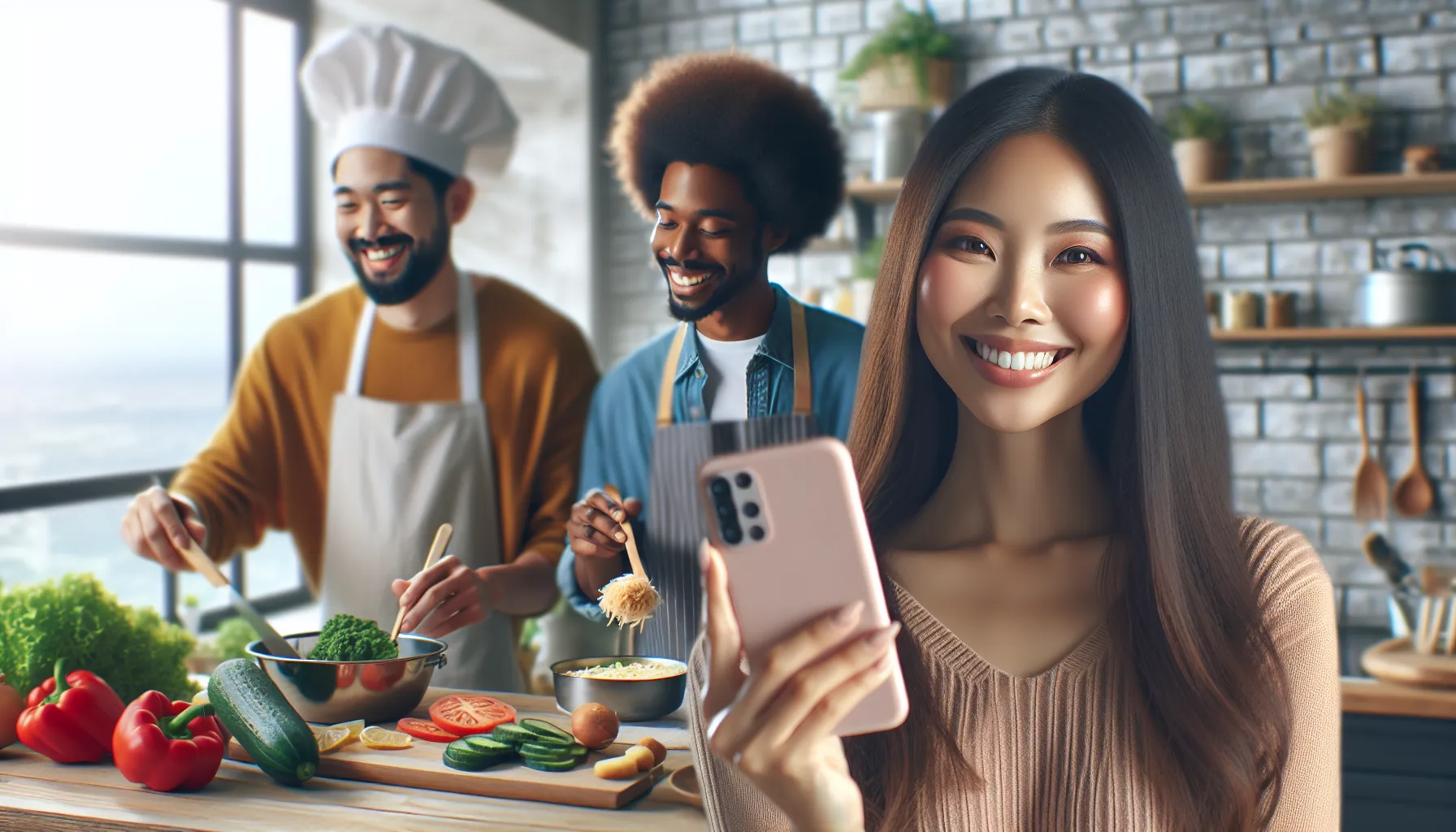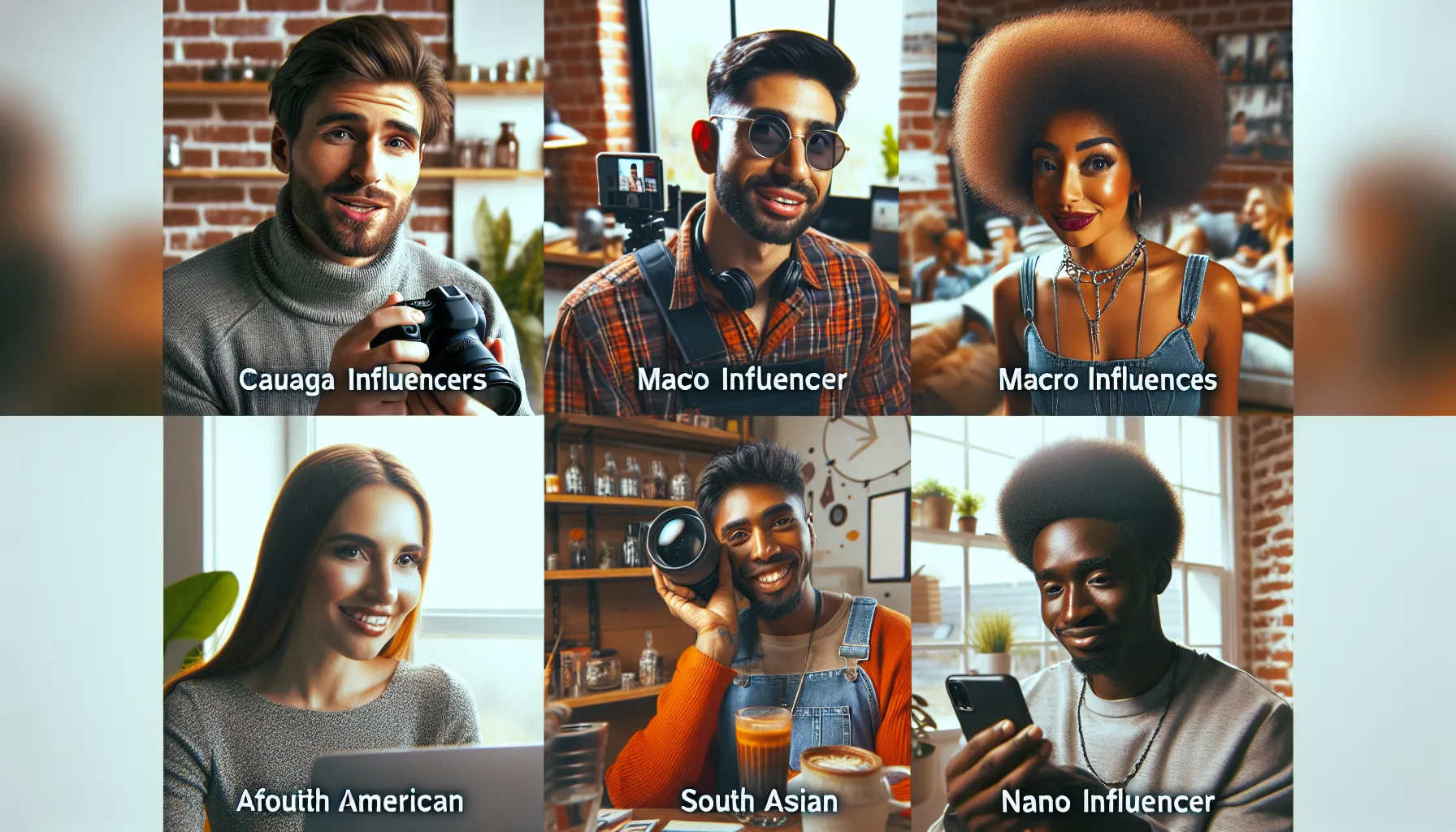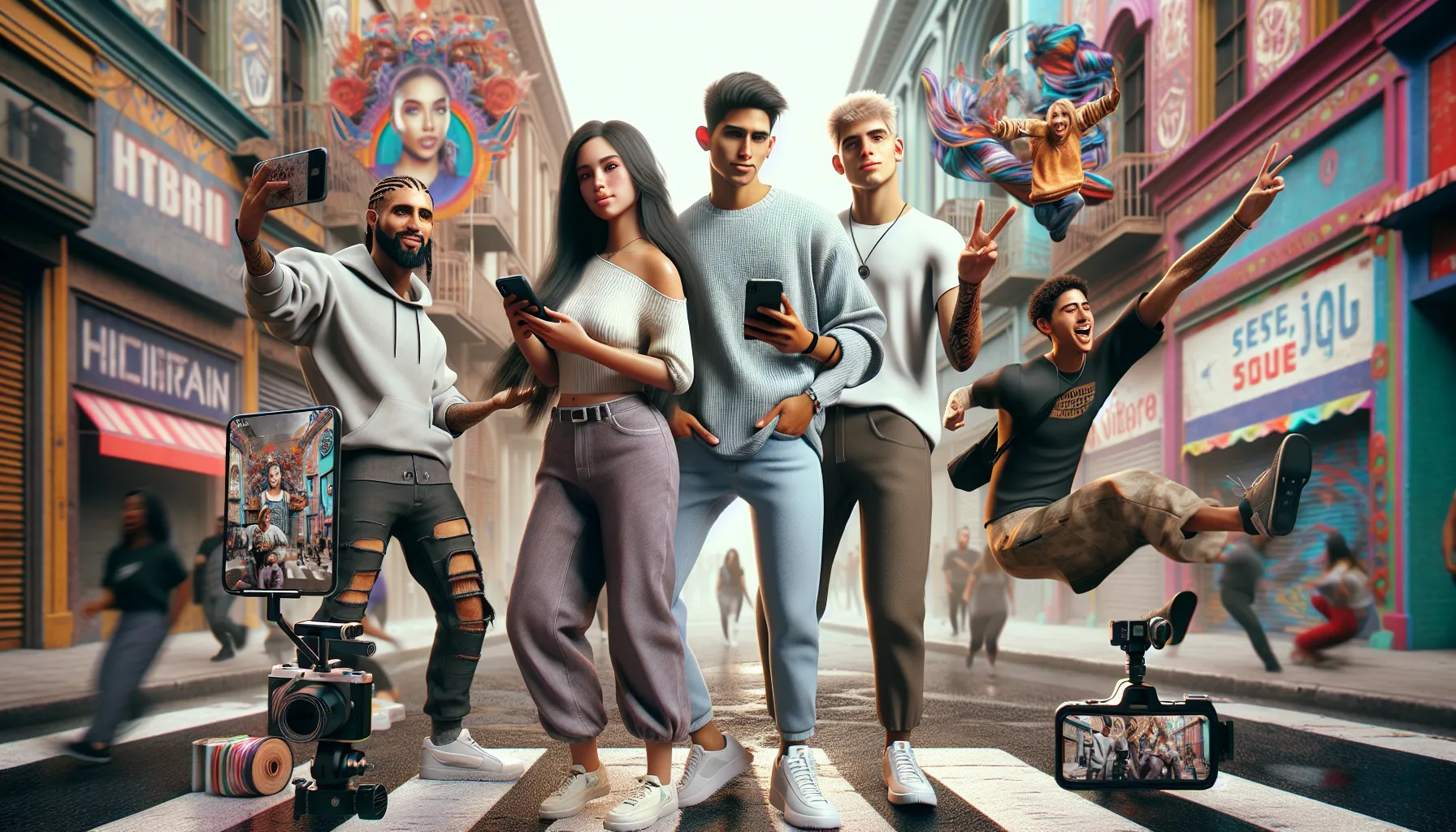Key Takeaways
- Social media influencers are individuals who shape trends, influence consumer decisions, and connect with audiences through relatable and authentic content.
- They create value for brands by showcasing products, sparking engagement, and driving targeted marketing campaigns.
- Influencers are categorized by follower size—nano, micro, macro, and mega influencers—each serving unique marketing purposes based on reach and audience connection.
- Popular platforms for influencers include Instagram, YouTube, TikTok, and Twitter, each supporting different types of content and audience engagement.
- Influencer marketing offers brands benefits like increased visibility, higher engagement rates, authentic promotions, and improved ROI.
- By leveraging trust and personal connections with followers, social media influencers have transformed modern marketing and trend creation.
Scrolling through Instagram, TikTok, or YouTube, you’ve probably come across someone whose posts seem to shape trends, spark conversations, or even influence what you buy. These people aren’t just content creators—they’re social media influencers. But what exactly does that mean?
To me, a social media influencer is someone who’s built a loyal online following by sharing relatable, inspiring, or entertaining content. They connect with their audience in a way that feels personal, which is why their opinions and recommendations carry so much weight. Whether it’s fashion, fitness, tech, or travel, influencers have become key players in shaping how we engage with brands and ideas online.
It’s fascinating how these individuals can turn their passions into careers while creating such a big impact. So, what makes someone an influencer, and why do they hold so much sway? Let’s dive in.
Understanding The Role Of A Social Media Influencer
Social media influencers act as trusted voices and ambassadors in their niche or industry. They create content that resonates with their followers, often sharing opinions, tutorials, reviews, or insights. Their ability to build credibility and trust makes them valuable partners for brands aiming to reach specific audiences.
These influencers shape consumer decisions by showcasing products, trends, or lifestyles. For example, a fitness influencer on Instagram may promote workout plans or dietary supplements, while a beauty vlogger on YouTube might review makeup products. Their recommendations often carry weight because of the perceived authenticity and relatability of their content.
Many businesses collaborate with influencers to enhance visibility or drive sales. From small startups to established brands, companies often rely on influencers to generate interest and engagement. This partnership can include sponsored posts, affiliate marketing, or product collaborations. By sharing these partnerships with their followers, influencers can create organic promotional opportunities.
Influencers also differ in reach, ranging from nano influencers with under 10,000 followers to mega influencers commanding millions. Each type caters to different marketing objectives, from local audience engagement to global campaigns.
Key Characteristics Of Social Media Influencers

Social media influencers possess distinct traits that help them connect with their audience and maintain their impact. These characteristics define their influence and effectiveness in the digital space.
Strong Personal Branding
Influencers establish a clear and consistent personal brand that aligns with their niche or area of expertise. This includes their tone, visuals, and topics, creating a recognizable identity. For instance, a beauty influencer might focus on skincare routines while maintaining an aesthetic Instagram profile featuring high-quality product shots and tutorials. Strong branding builds trust and recognition among followers.
Authenticity And Credibility
Authenticity sets influencers apart, as followers value genuine voices over scripted promotions. Influencers share personal experiences, unfiltered opinions, or behind-the-scenes moments, making their content relatable. For example, a travel influencer posting honest reviews about destinations enhances credibility, developing a loyal community that trusts their recommendations.
Audience Engagement
Effective influencers focus on engaging their audience through conversations, polls, or interactive content. They respond to comments, host Q&A sessions, or collaborate with followers on ideas. A food influencer might ask for feedback on recipes or showcase user-inspired dishes, creating a sense of connection and involvement that strengthens their influence.
Different Types Of Social Media Influencers

Social media influencers are categorized based on the size of their follower base, each serving distinct purposes for brands and audiences. Here’s a breakdown of the main types.
Mega Influencers
Mega influencers have over 1 million followers on platforms like Instagram or TikTok. They often include celebrities, public figures, or internet personalities with broad appeal. I see these influencers dominate campaigns for international or luxury brands due to their massive visibility and ability to reach diverse audiences. Their posts often generate high engagement volumes but can sometimes lack the personal connection seen with smaller influencers.
Macro Influencers
Macro influencers typically have 100,000 to 1 million followers. They’re often content creators who gained fame online for their expertise, humor, or unique perspective. I notice that brands work with macro influencers to target a specific demographic while still benefiting from considerable reach. Their content feels more relatable than mega influencers while maintaining professional quality.
Micro Influencers
Micro influencers have 10,000 to 100,000 followers and focus on specialized niches like fitness, food, or travel. Their strong personal connection with their audience often leads to higher engagement rates. When I work with a micro influencer, I see that their authentic voice and community trust make their recommendations particularly effective for targeted campaigns.
Nano Influencers
Nano influencers have up to 10,000 followers and are known for their highly localized or niche audience. Despite their smaller reach, I find their followers value their opinions deeply due to a personal connection. They’re ideal for hyper-targeted marketing campaigns and community-oriented brands aiming for genuine, grassroots promotion.
Platforms Where Influencers Thrive

Social media influencers excel across various platforms, each catering to different content types, audience preferences, and interaction styles. These platforms serve as the foundation for influencers to build their communities and showcase their expertise.
Instagram is central to influencer marketing due to its visually driven format. Influencers share high-quality photos, Stories, and Reels to engage followers. This platform works best for niches like fashion, travel, lifestyle, and food. For example, fitness influencers often use Instagram to post workout routines and healthy meal ideas. With interactive features such as polls and question stickers, influencers foster meaningful audience engagement.
YouTube
YouTube plays a pivotal role for long-form content and in-depth storytelling. Influencers use this platform for tutorials, product reviews, and vlogging. Tech reviewers and beauty gurus, for instance, create detailed videos to educate and entertain viewers. YouTube’s monetization options, such as ad revenue and channel memberships, also enable influencers to earn directly from their content.
TikTok
TikTok’s short-form video model appeals to diverse audiences with its fast-paced, trend-focused format. Influencers leverage trending challenges, niche humor, and creative editing to captivate users. Dance and comedy influencers thrive here, alongside niche creators like DIY crafters. TikTok’s algorithm is geared toward discoverability, helping influencers gain visibility even without a large following.
Twitter And Beyond
Twitter supports real-time communication and idea sharing. Influencers in industries like technology, business, and journalism gain traction through tweets, threads, and discussions. Platforms beyond Twitter, such as LinkedIn, Pinterest, and Twitch, cater to specific niches. For example, LinkedIn is ideal for professional influencers, while Twitch emphasizes gaming and live interaction.
The Impact Of Social Media Influencers On Modern Marketing
Social media influencers have transformed modern marketing by bridging the gap between brands and their target audiences. Their personal connections with followers make their endorsements more impactful than traditional advertising. Businesses leverage this trust to promote products and services in ways that feel organic.
- Increased Brand Awareness
Influencers amplify brand visibility by showcasing products to their audiences. For instance, a fitness influencer on Instagram might promote workout gear, reaching thousands or even millions of fitness enthusiasts.
- Targeted Marketing
Collaborating with influencers enables precise audience targeting. A skincare brand can partner with beauty influencers to reach consumers already interested in beauty products, ensuring higher engagement.
- Higher Engagement Rates
Influencers drive meaningful interactions through likes, comments, and shares. A tech reviewer on YouTube, for example, can generate detailed user discussions around a product, which boosts interest and visibility.
- Authenticity In Advertising
Influencers create authentic content that resonates. When a food blogger shares a recipe featuring a specific ingredient, it feels more trustworthy compared to a generic advertisement.
- Improved ROI
Brands often see higher returns on investment from influencer campaigns. Micro influencers, despite their smaller audiences, deliver excellent ROI due to their niche-focused, highly engaged followers.
- Trend Creation And Adoption
Influencers introduce new trends, from fashion styles to lifestyle habits. A TikTok influencer may popularize a unique challenge, prompting followers to adopt it and further spreading the trend.
These impacts illustrate how influencers continue reshaping the marketing landscape by aligning brand objectives with audience preferences.
Conclusion
Social media influencers have become an integral part of how we connect, consume, and make decisions online. Their ability to build trust and engage with their audiences has reshaped the way brands approach marketing. Whether it’s through creative content, authentic recommendations, or fostering community connections, influencers continue to play a powerful role in shaping trends and influencing consumer behavior.
As the digital landscape evolves, so will the role of influencers, offering even more opportunities for innovation and collaboration. It’s fascinating to see how these individuals bridge the gap between brands and audiences, creating genuine connections in a fast-paced, ever-changing world.
Frequently Asked Questions
Who are social media influencers?
Social media influencers are individuals with dedicated online followings who create engaging content to connect with their audience. They often specialize in a niche, sharing opinions, tutorials, reviews, or recommendations, which shape trends and influence consumer behavior.
Why are social media influencers important for marketing?
Influencers bridge the gap between brands and target audiences by building trust and delivering authentic messages. Their endorsements often lead to higher engagement, improved brand visibility, and better ROI compared to traditional advertising.
What are the different types of social media influencers?
Influencers are categorized by follower count:
- Mega influencers: Over 1M followers.
- Macro influencers: 100K–1M followers.
- Micro influencers: 10K–100K followers.
- Nano influencers: Up to 10K followers.
What platforms are best for social media influencers?
Popular platforms include:
- Instagram: Ideal for visually-driven content like fashion/lifestyle.
- YouTube: Great for in-depth tutorials and storytelling.
- TikTok: Perfect for short-form, trend-focused videos.
- Others: Twitter for real-time updates, LinkedIn for professionals, and Pinterest/Twitch for specific niches.
What makes a social media influencer successful?
Successful influencers excel in personal branding, authenticity, credibility, and audience engagement. They maintain consistent identities, share genuine experiences, and actively interact with followers to build trust and connections.
How do influencers impact consumer behavior?
Influencers create relatable content and authentic recommendations, making their followers more likely to trust and mimic their choices. This can lead to increased product awareness, trend adoption, and purchase decisions.
Why do brands collaborate with influencers?
Brands collaborate with influencers to reach targeted audiences, enhance visibility, and drive sales. Influencers’ relatable content and established trust with their followers make them valuable marketing partners.
How do nano influencers differ from mega influencers?
Nano influencers have smaller followings (up to 10K) but foster deep personal connections, making them ideal for niche marketing. Mega influencers, with over 1 million followers, cater to broader audiences, often at a higher cost.
Can influencers help small businesses?
Yes, collaborating with micro or nano influencers can be highly effective for small businesses. These influencers have engaged niche audiences, enabling businesses to target specific demographics affordably and authentically.
How do influencers build trust with their audience?
Influencers maintain trust by being authentic, sharing honest opinions, and consistently engaging with their followers. Their relatable content resonates more deeply than scripted promotions, fostering credibility and loyalty.

